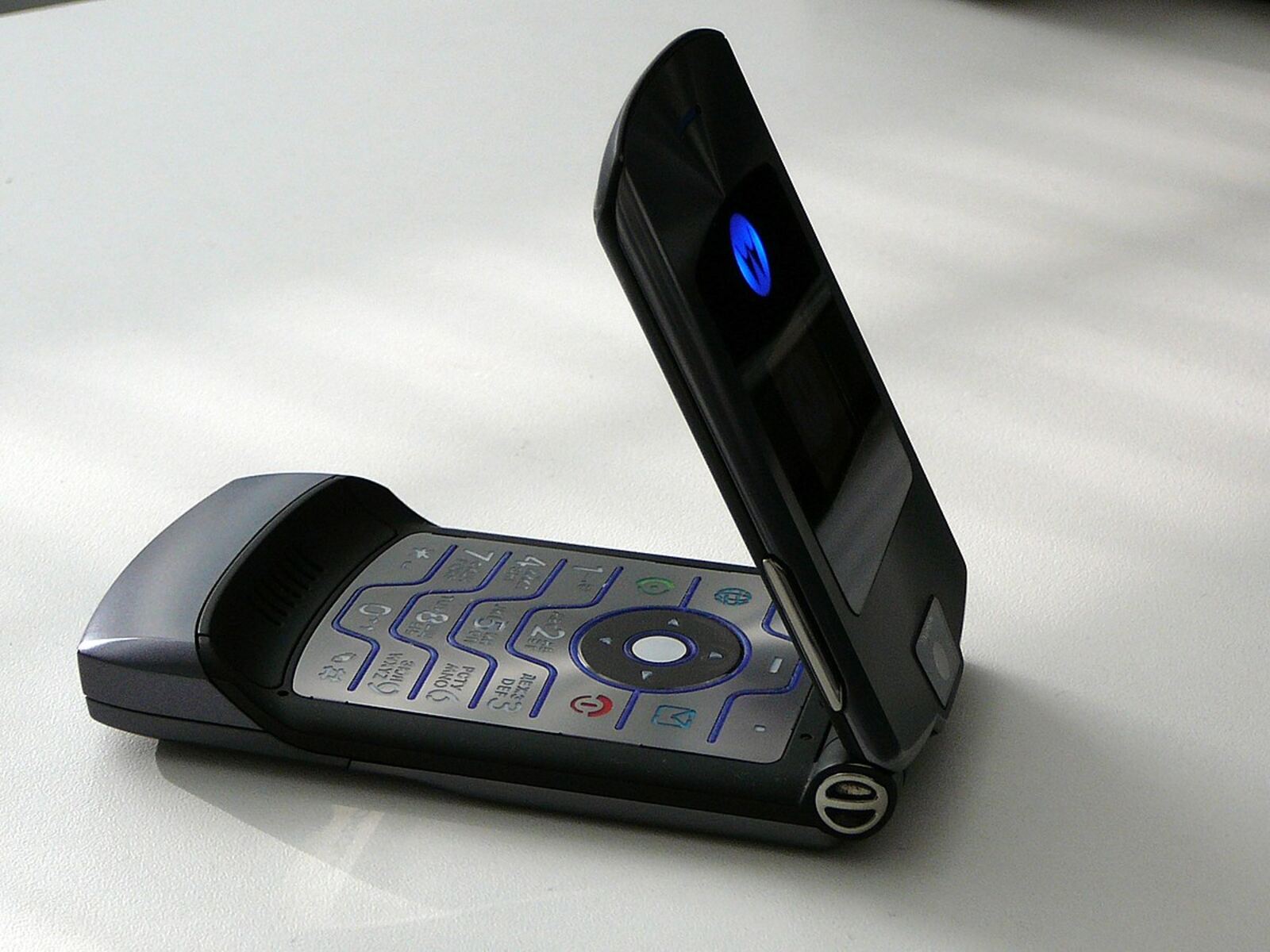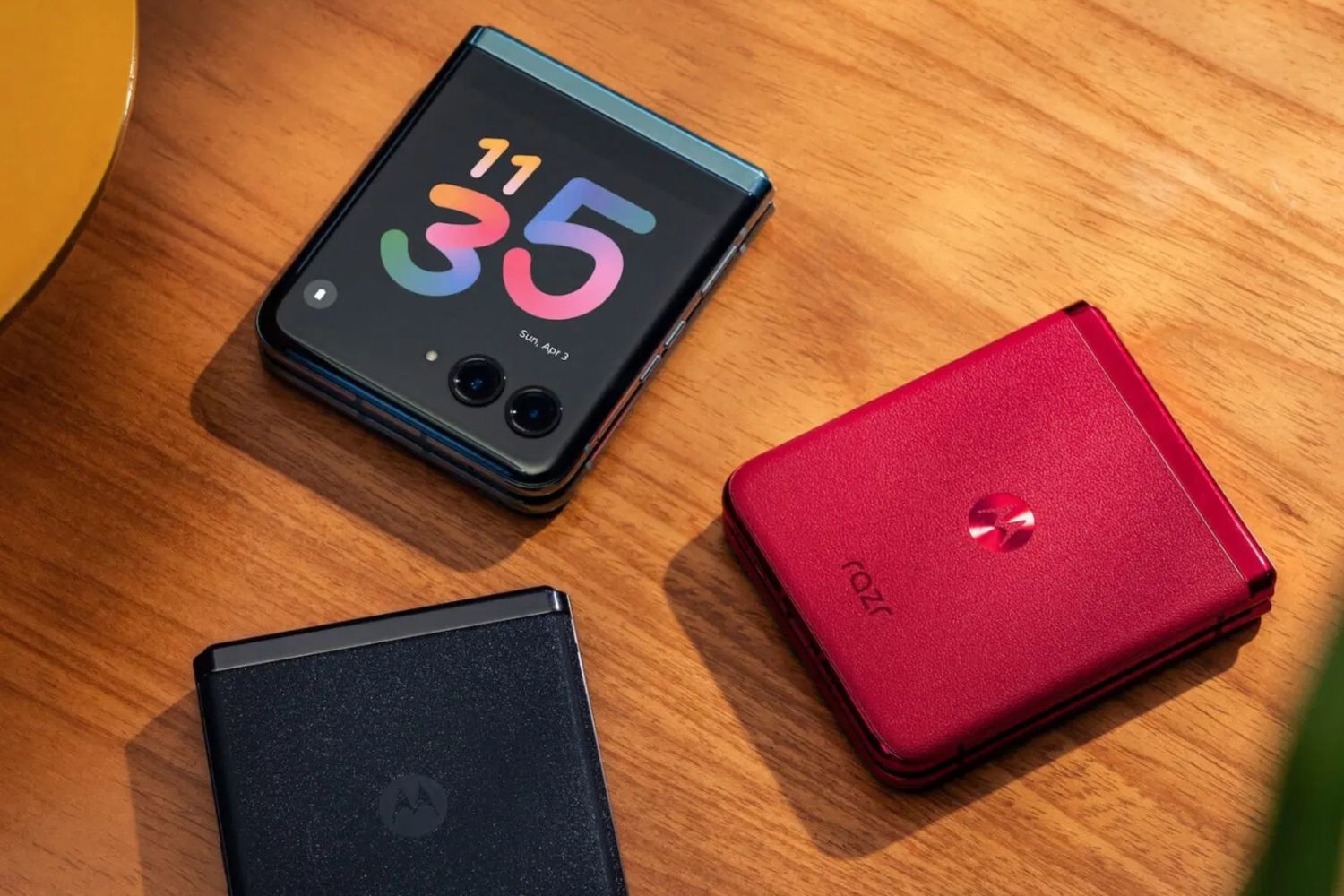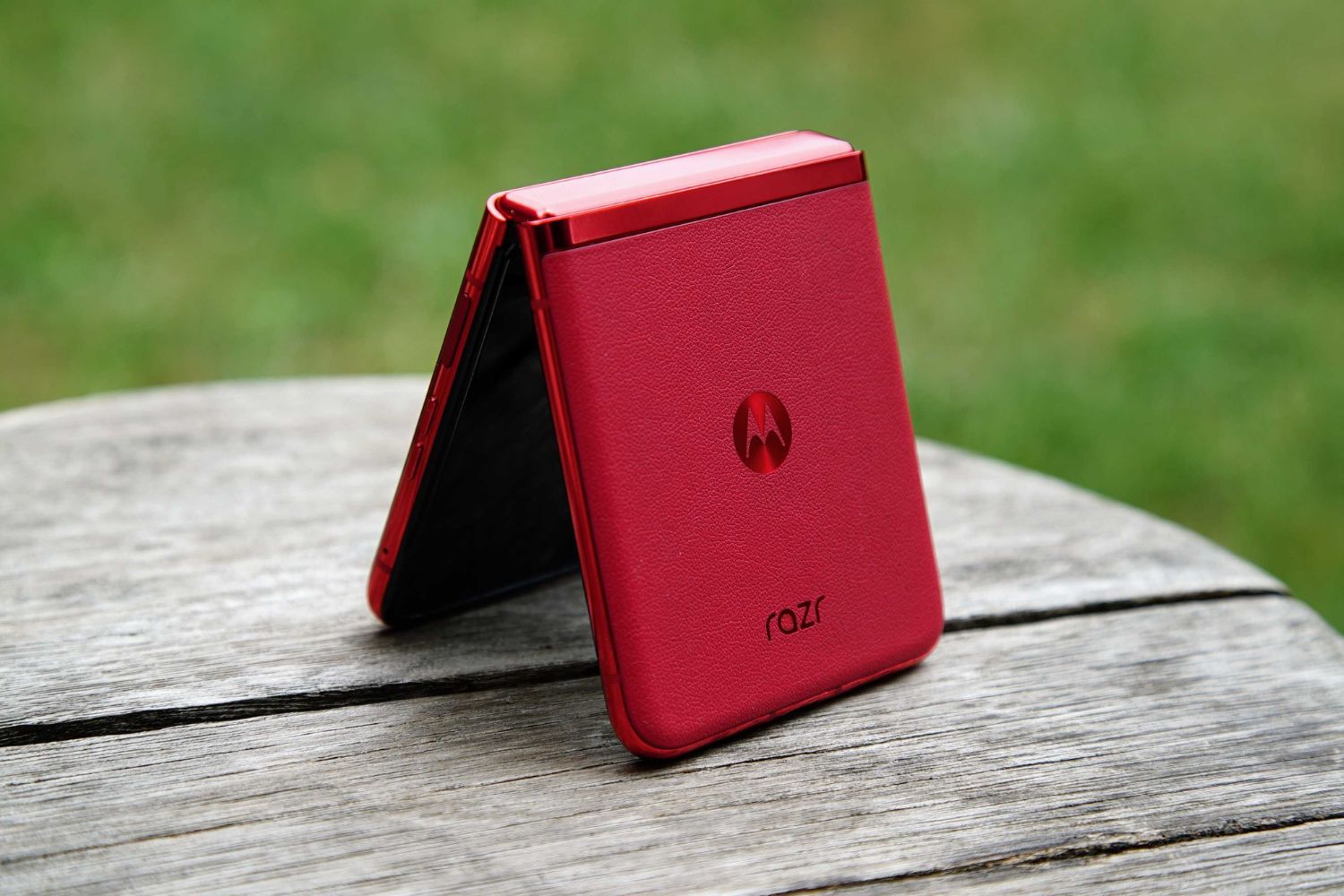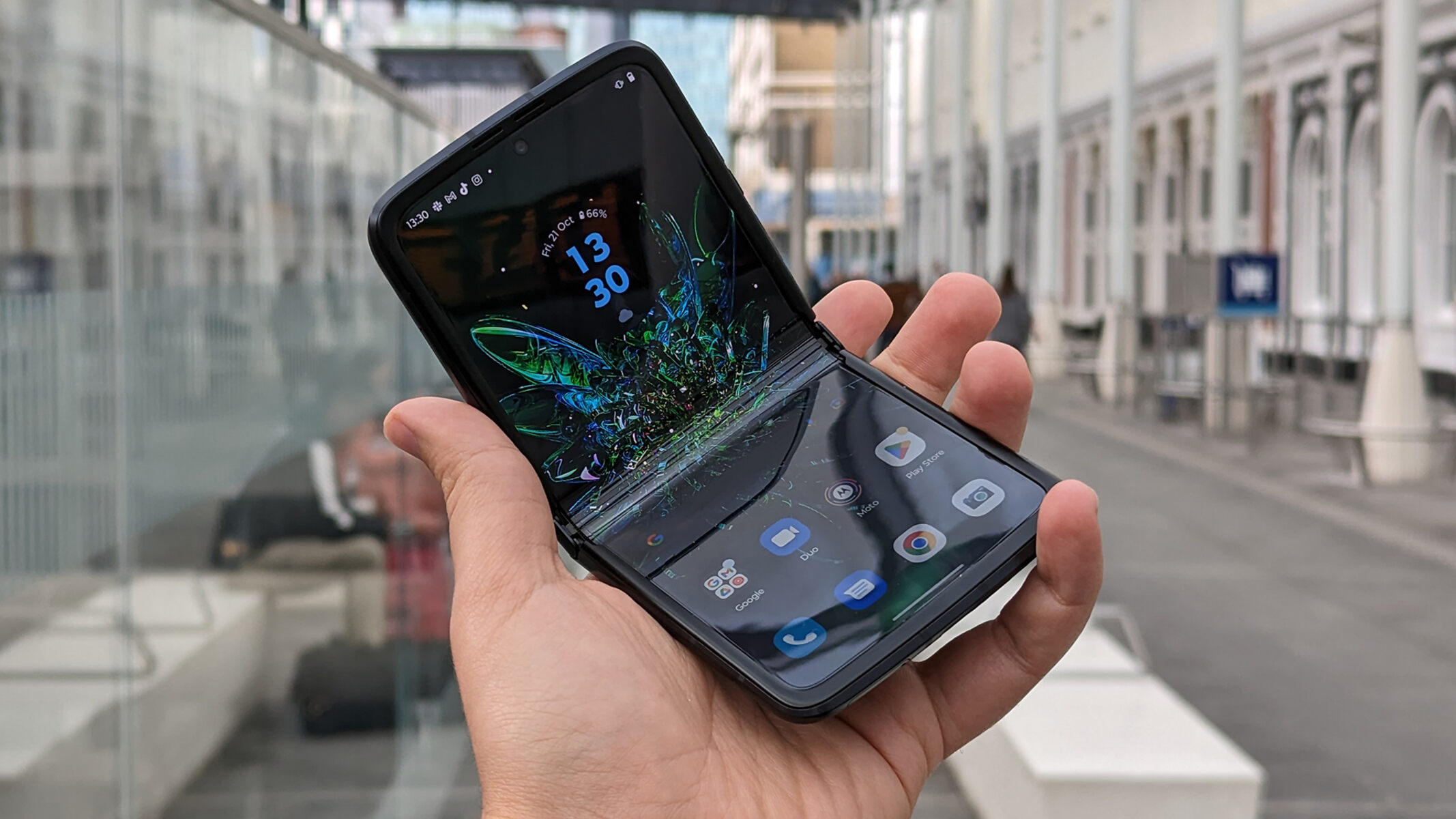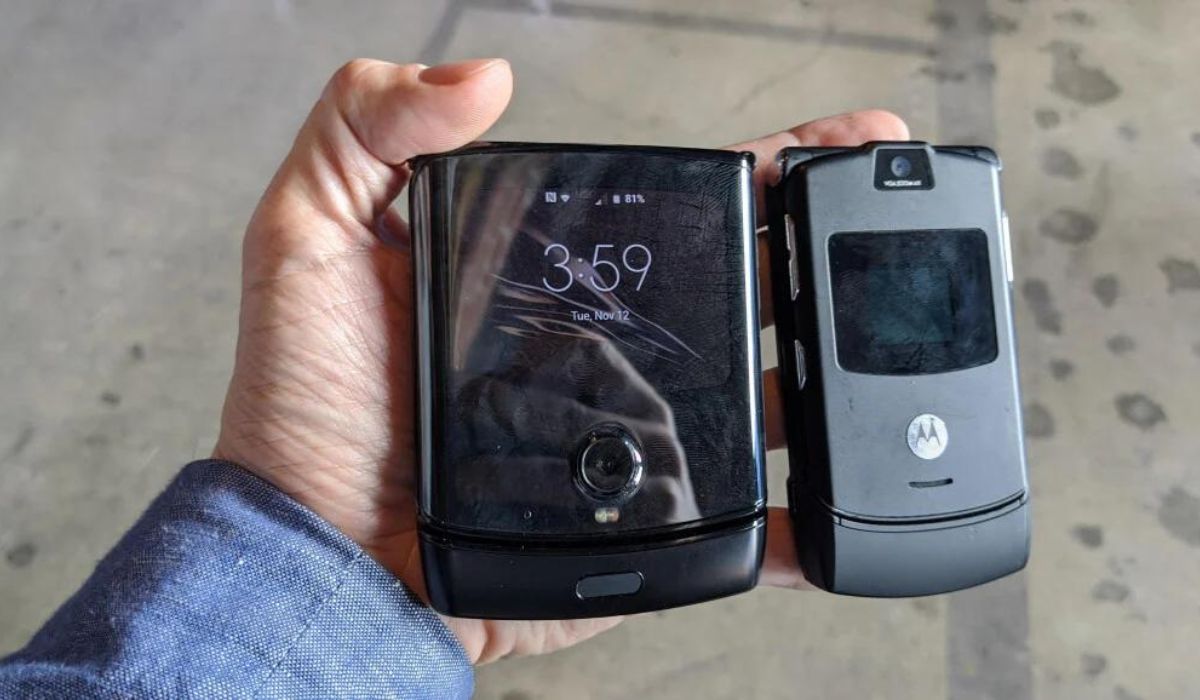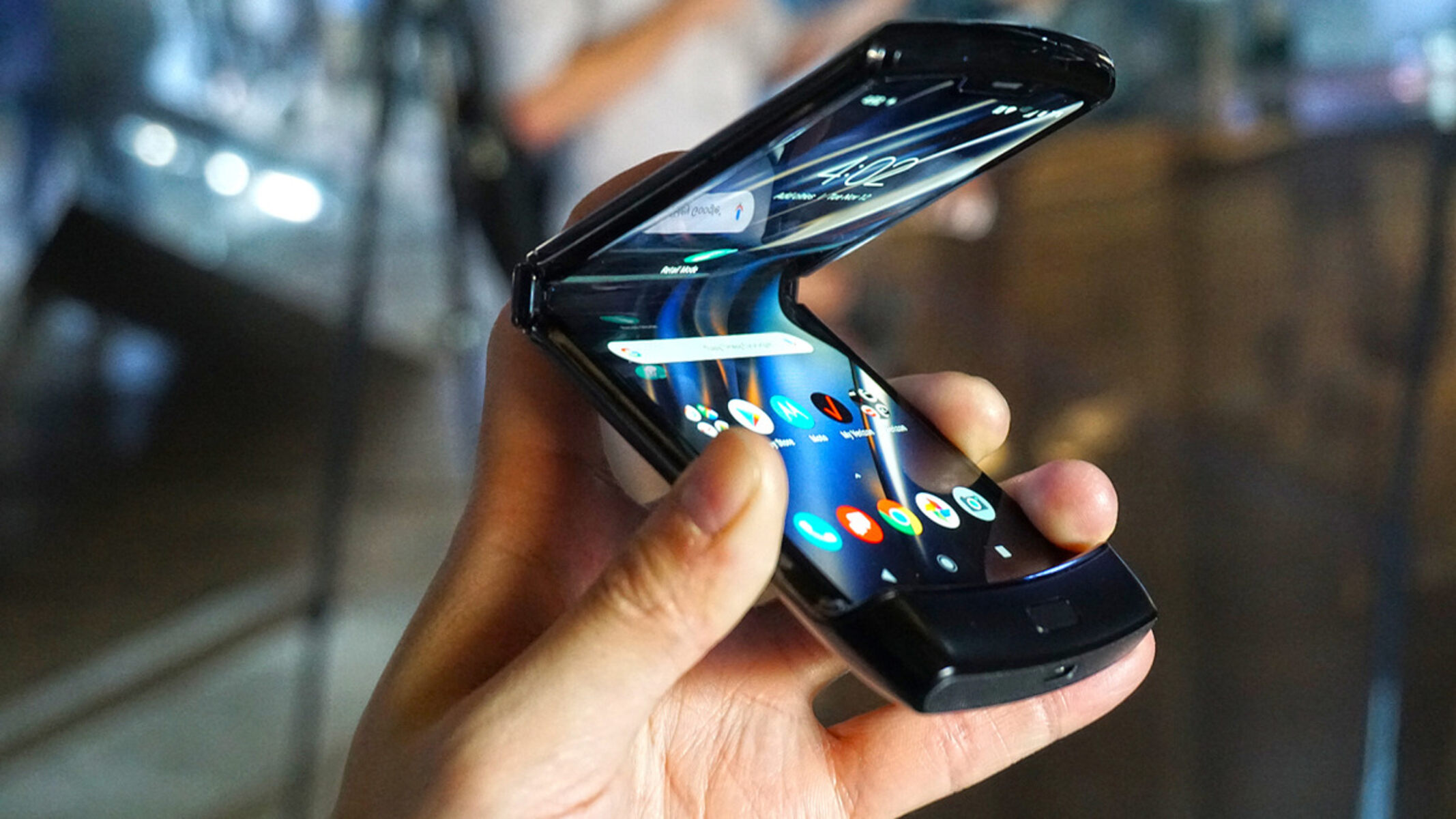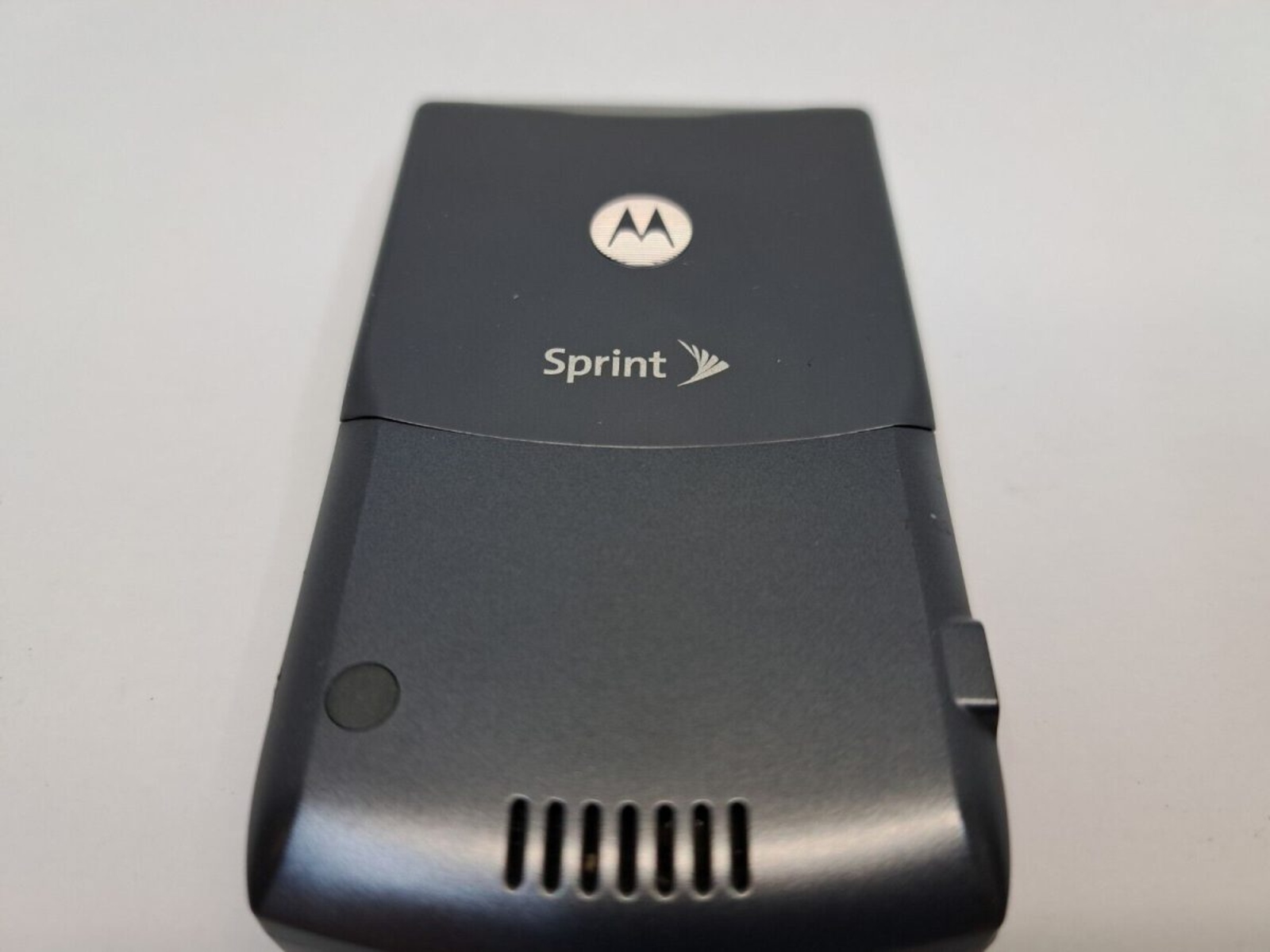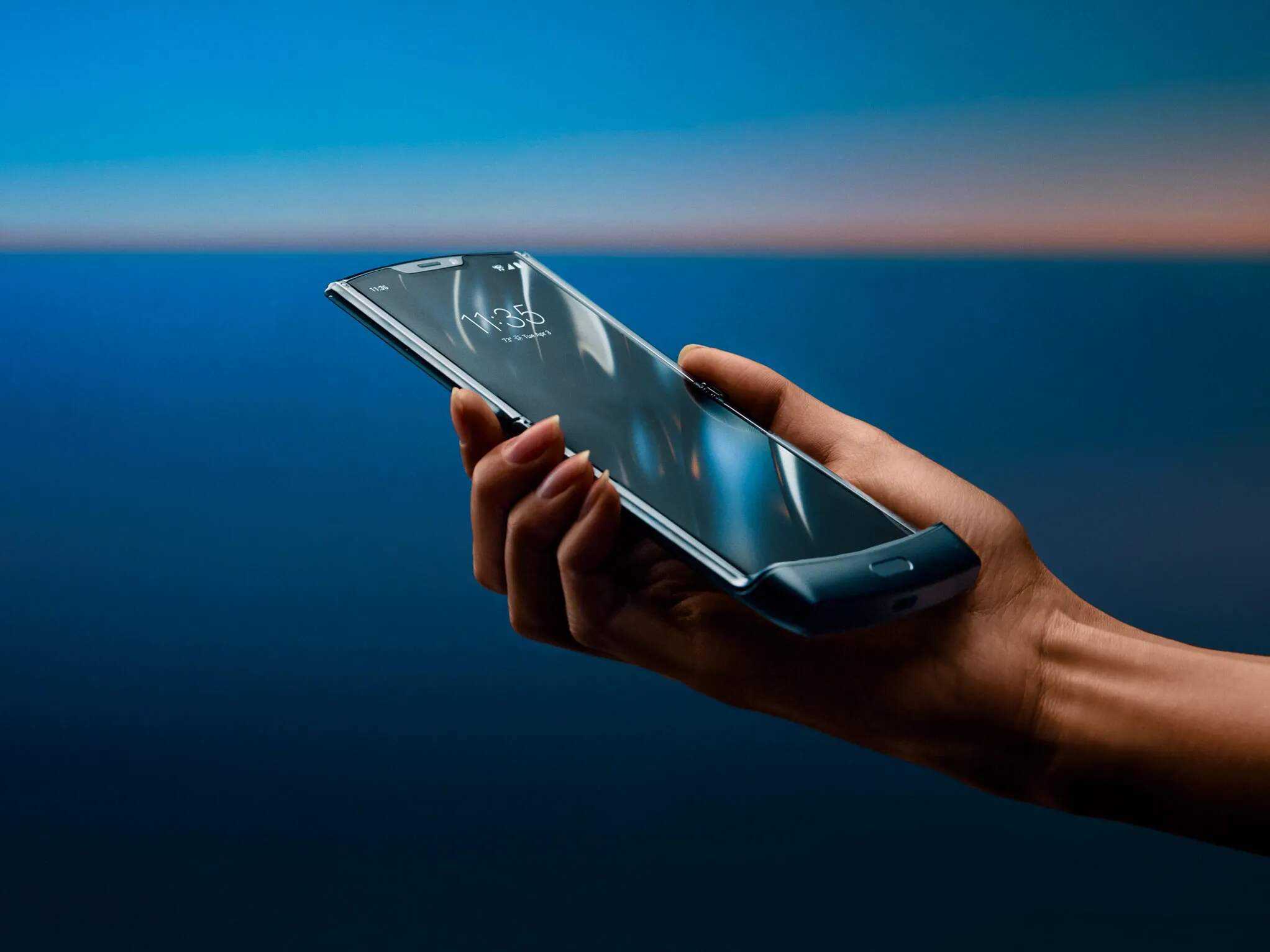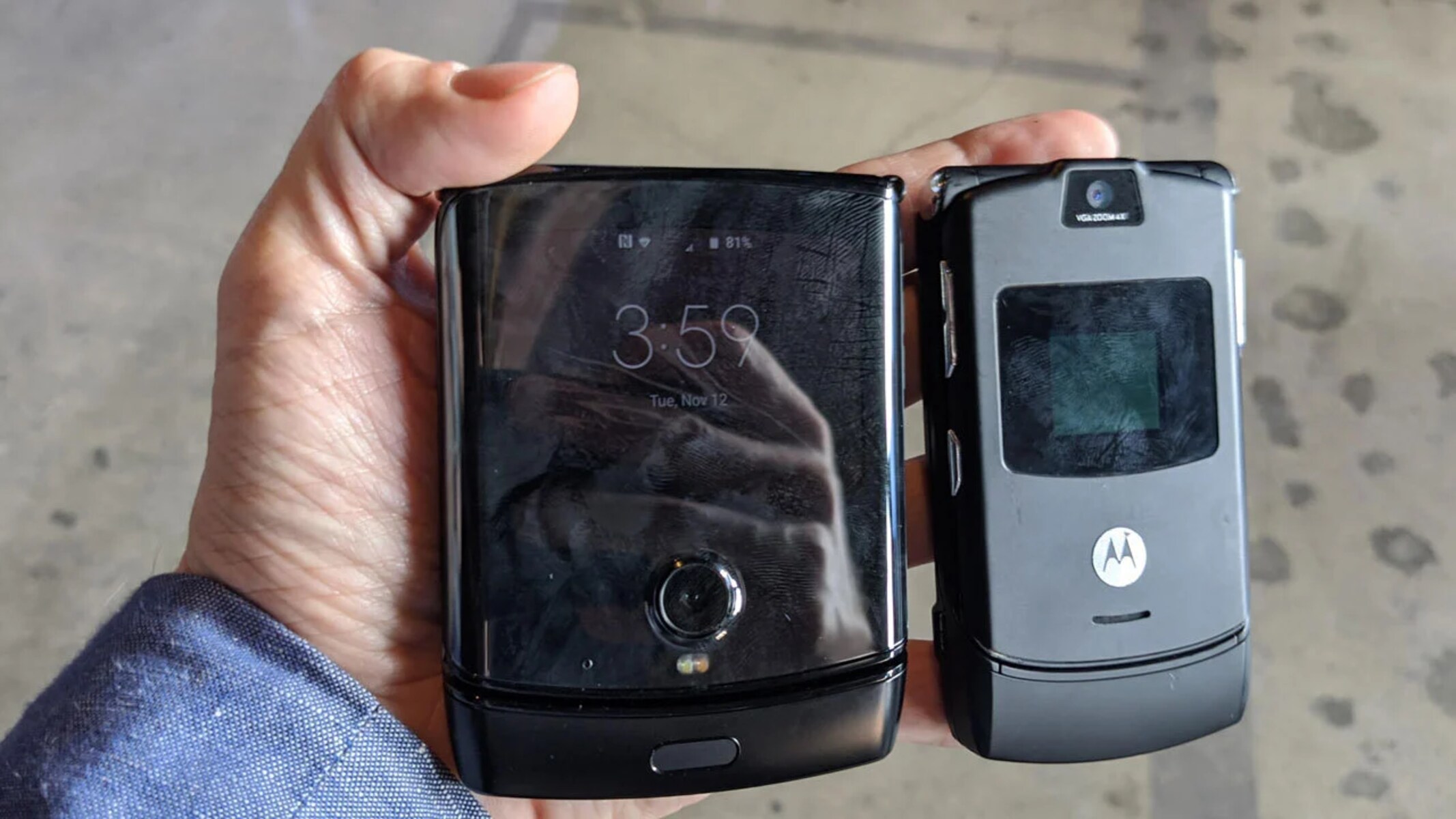Introduction
Encountering a black screen on your Motorola Razr can be a perplexing and frustrating experience. Whether you're in the midst of an important task or simply trying to stay connected, a black screen can disrupt your mobile experience. However, fear not, as there are several troubleshooting steps you can take to resolve this issue and restore your device to its optimal functionality.
In this comprehensive guide, we will delve into the various methods for troubleshooting a black screen on your Motorola Razr. From basic power checks to advanced software diagnostics, we will walk you through each step with clarity and precision. By following these troubleshooting techniques, you can potentially resolve the black screen dilemma and regain seamless access to your device's features and applications.
So, if you find yourself staring at a perplexing black screen on your Motorola Razr, don't panic. Instead, arm yourself with the knowledge and strategies outlined in this guide, and embark on a journey to troubleshoot and resolve this issue effectively. Let's dive into the troubleshooting process and reclaim the full potential of your Motorola Razr.
Check for Power
The first step in troubleshooting a black screen on your Motorola Razr is to ensure that the device has an adequate power supply. Begin by connecting your device to a power source using the original charger and cable. It's essential to use the authentic charging accessories provided by Motorola to ensure optimal compatibility and performance. Once connected, allow the device to charge for at least 15-20 minutes, even if the screen remains black.
After the initial charging period, attempt to power on the device by pressing and holding the power button for several seconds. If the device fails to respond, try using a different power outlet or USB port to rule out potential issues with the power source. Additionally, inspect the charging cable and port for any signs of damage or debris that may impede the charging process.
If the device exhibits no response after being connected to a power source, it's advisable to perform a soft reset. To do this, press and hold the power button and the volume down button simultaneously for approximately 10-15 seconds. This action may prompt the device to restart and potentially resolve the black screen issue.
In some cases, a drained battery or power-related anomalies can lead to a black screen on the Motorola Razr. By diligently checking for power and ensuring a proper charging connection, you can eliminate potential power-related factors and move on to the next troubleshooting steps with confidence.
By meticulously addressing the power aspect, you lay a solid foundation for the subsequent troubleshooting measures. Whether the black screen stems from power-related issues or not, ruling out this fundamental factor is crucial in the quest to restore your Motorola Razr to its optimal functionality.
Restart the Device
Restarting your Motorola Razr can serve as a simple yet effective troubleshooting technique to address a black screen issue. This process involves initiating a complete reboot of the device, which can potentially resolve temporary software glitches or unresponsive system processes that may be causing the black screen.
To restart your device, begin by pressing and holding the power button located on the side of the device. A menu should appear on the screen, presenting options such as "Power off," "Restart," or "Emergency mode." Select the "Restart" option and allow the device to power down and reboot. If the screen remains unresponsive during this process, proceed with a forced restart by pressing and holding the power button for approximately 10-15 seconds until the device powers off. Afterward, press the power button again to turn the device back on.
Upon initiating the restart, observe the device as it goes through the reboot process. Pay close attention to any changes in the screen behavior or indications of the device powering on. In some instances, a simple restart can effectively eliminate temporary software hiccups or system errors that may have led to the black screen.
It's important to note that restarting the device does not erase any personal data or settings. Instead, it focuses on refreshing the device's software and system processes, potentially resolving the black screen issue without impacting your stored information.
If the black screen persists after restarting the device, proceed to the next troubleshooting steps outlined in this guide. By systematically addressing potential causes and employing targeted troubleshooting techniques, you can enhance the likelihood of identifying and resolving the underlying issue causing the black screen on your Motorola Razr.
Restarting your device serves as an initial and straightforward step in the troubleshooting process. It sets the stage for further diagnostic measures, allowing you to progress through the troubleshooting journey with a methodical and comprehensive approach.
Check for Software Updates
Ensuring that your Motorola Razr is running the latest software updates is a pivotal step in troubleshooting a black screen issue. Software updates often contain bug fixes, security enhancements, and performance optimizations that can address underlying software-related issues, including those that may manifest as a black screen.
To check for software updates on your Motorola Razr, navigate to the device's settings and locate the "System" or "About phone" section. Within this menu, select the "System updates" or "Software updates" option to initiate a scan for available updates. If an update is detected, follow the on-screen prompts to download and install the latest software version.
It's important to ensure that your device is connected to a stable Wi-Fi network and has an ample battery charge before initiating the software update process. This helps prevent interruptions during the update download and installation, ensuring a smooth and successful update procedure.
In addition to checking for updates via the device's settings, you can also utilize Motorola's official software management tools, such as the Motorola Device Manager or Motorola Software Update tool, to verify and install available updates. These dedicated software management utilities provide a streamlined approach to managing your device's software, offering a convenient method for ensuring that your Motorola Razr is running the latest firmware.
By proactively checking for and installing software updates, you equip your device with the latest enhancements and optimizations, potentially addressing software-related anomalies that may contribute to a black screen. Furthermore, staying current with software updates helps maintain the overall security, stability, and performance of your Motorola Razr, ensuring a seamless and reliable mobile experience.
If the black screen issue persists after updating the device's software, proceed to the next troubleshooting steps to further diagnose and address the underlying cause. By systematically exploring potential factors and employing targeted troubleshooting techniques, you can enhance the likelihood of resolving the black screen issue and restoring your Motorola Razr to its optimal functionality.
Checking for software updates stands as a proactive measure in the troubleshooting process, offering the potential to address underlying software-related anomalies and contribute to the overall health and performance of your Motorola Razr.
Boot into Safe Mode
Booting your Motorola Razr into Safe Mode can be a valuable strategy in troubleshooting a black screen issue. Safe Mode allows the device to start with only essential system processes and pre-installed applications, excluding third-party apps that may be contributing to the black screen problem. By isolating the device to this minimal operational state, you can assess whether the black screen persists due to a third-party app or if it is rooted in the device's core system.
To boot your Motorola Razr into Safe Mode, begin by pressing and holding the power button until the power off prompt appears on the screen. Next, press and hold the "Power off" option until the Safe Mode prompt appears, then select "OK" to confirm. The device will then initiate a reboot into Safe Mode, indicated by the Safe Mode label displayed in the lower-left corner of the screen.
Once in Safe Mode, observe the device's behavior and screen performance. If the black screen issue does not manifest in Safe Mode, it suggests that a third-party app installed on the device may be contributing to the problem. In this scenario, you can proceed to identify and uninstall recently installed or suspicious third-party apps that may be causing the black screen when operating in the standard mode.
Conversely, if the black screen persists in Safe Mode, it indicates that the issue may be rooted in the device's core system or pre-installed applications. In such cases, additional troubleshooting steps, such as a factory reset or seeking professional support, may be necessary to address the underlying cause effectively.
Booting into Safe Mode provides a valuable opportunity to pinpoint the source of the black screen issue, whether it stems from third-party apps or the device's core system. By leveraging Safe Mode as a diagnostic tool, you can gain insights into the nature of the problem and tailor your troubleshooting approach accordingly.
If the black screen issue persists after booting into Safe Mode, proceed to the next troubleshooting steps outlined in this guide. By systematically exploring potential causes and employing targeted troubleshooting techniques, you can enhance the likelihood of identifying and resolving the underlying issue causing the black screen on your Motorola Razr.
Factory Reset
Performing a factory reset on your Motorola Razr is a comprehensive troubleshooting measure that aims to address persistent software issues, including a black screen dilemma. This process involves restoring the device to its original factory settings, effectively erasing all user data, settings, and installed applications. While a factory reset is a powerful tool for resolving software-related anomalies, it is crucial to approach this step with careful consideration due to its irreversible nature.
Before initiating a factory reset, it is imperative to back up any essential data, such as contacts, photos, and documents, to prevent permanent loss during the reset process. Once the backup is complete, you can proceed with the factory reset by accessing the device's settings and navigating to the "System" or "Reset options" section. Within this menu, select the "Erase all data (factory reset)" option and follow the on-screen prompts to confirm the reset.
Upon initiating the factory reset, the device will undergo a comprehensive erasure of user data and settings, reverting to the original factory state. This process may take several minutes to complete, during which the device will restart and initialize the reset procedure. It is essential to ensure that the device remains connected to a stable power source throughout the reset process to prevent interruptions.
Following the completion of the factory reset, the device will reboot into its factory-fresh state, devoid of any user-installed data or applications. At this stage, you can gradually restore your backed-up data and selectively reinstall essential applications to rebuild your personalized device configuration.
It is important to note that a factory reset should be considered as a last resort in troubleshooting a black screen issue, especially if other methods have proven ineffective. While a factory reset can effectively address persistent software anomalies, it also entails the loss of all user data and settings, necessitating a meticulous approach to data backup and restoration.
If the black screen issue persists even after a factory reset, it may indicate a deeper hardware-related problem or a rare software anomaly that requires professional assessment. In such cases, reaching out to Motorola support or authorized service providers can provide valuable insights and potential solutions to resolve the issue effectively.
By approaching the factory reset with caution and understanding its implications, you can leverage this powerful troubleshooting technique to potentially address the black screen issue and restore your Motorola Razr to its optimal functionality.
Contact Motorola Support
If the troubleshooting steps outlined in this guide have not resolved the black screen issue on your Motorola Razr, reaching out to Motorola Support can provide valuable assistance and potential solutions. Motorola's dedicated support channels offer access to knowledgeable representatives who can offer personalized guidance and technical expertise to address complex device issues.
To contact Motorola Support, you can explore several convenient avenues tailored to your preferences and needs. One of the primary support channels is the official Motorola website, which features comprehensive support resources, including troubleshooting guides, FAQs, and community forums where users can seek advice and insights from fellow Motorola device owners.
Additionally, Motorola offers direct customer support through phone and live chat services, allowing you to engage in real-time conversations with support representatives. By articulating the specifics of your black screen issue and detailing the troubleshooting steps you have undertaken, you can receive tailored recommendations and potential next steps to address the problem effectively.
For those who prefer in-person assistance, Motorola's authorized service centers provide a hands-on approach to diagnosing and resolving device issues. These service centers are staffed with trained technicians equipped to conduct thorough assessments of your Motorola Razr and offer professional insights into the underlying cause of the black screen issue.
When reaching out to Motorola Support, it is beneficial to have pertinent details readily available, such as the device's serial number, purchase information, and a comprehensive description of the black screen symptoms. Providing this information can streamline the support process and enable the representatives to offer targeted assistance aligned with your device's specific circumstances.
By leveraging Motorola's support resources and engaging with their knowledgeable representatives, you can gain access to expert insights and potential solutions to address the black screen issue effectively. Whether through online support channels, direct communication, or in-person assistance, Motorola's support ecosystem is designed to empower users in resolving device-related challenges and optimizing their overall mobile experience.
In the event that the black screen issue persists despite exhaustive troubleshooting efforts, Motorola Support can offer valuable guidance on potential warranty coverage, repair options, or advanced diagnostics to uncover and address the root cause of the problem. By tapping into Motorola's support infrastructure, you can navigate the complexities of device troubleshooting with confidence and pursue viable solutions to restore your Motorola Razr to its optimal functionality.
Remember, Motorola Support is dedicated to assisting users in overcoming device challenges and ensuring a seamless and satisfying mobile experience. Whether facing a black screen issue or other device-related concerns, don't hesitate to leverage Motorola's support resources to gain the insights and assistance needed to address the problem effectively.







